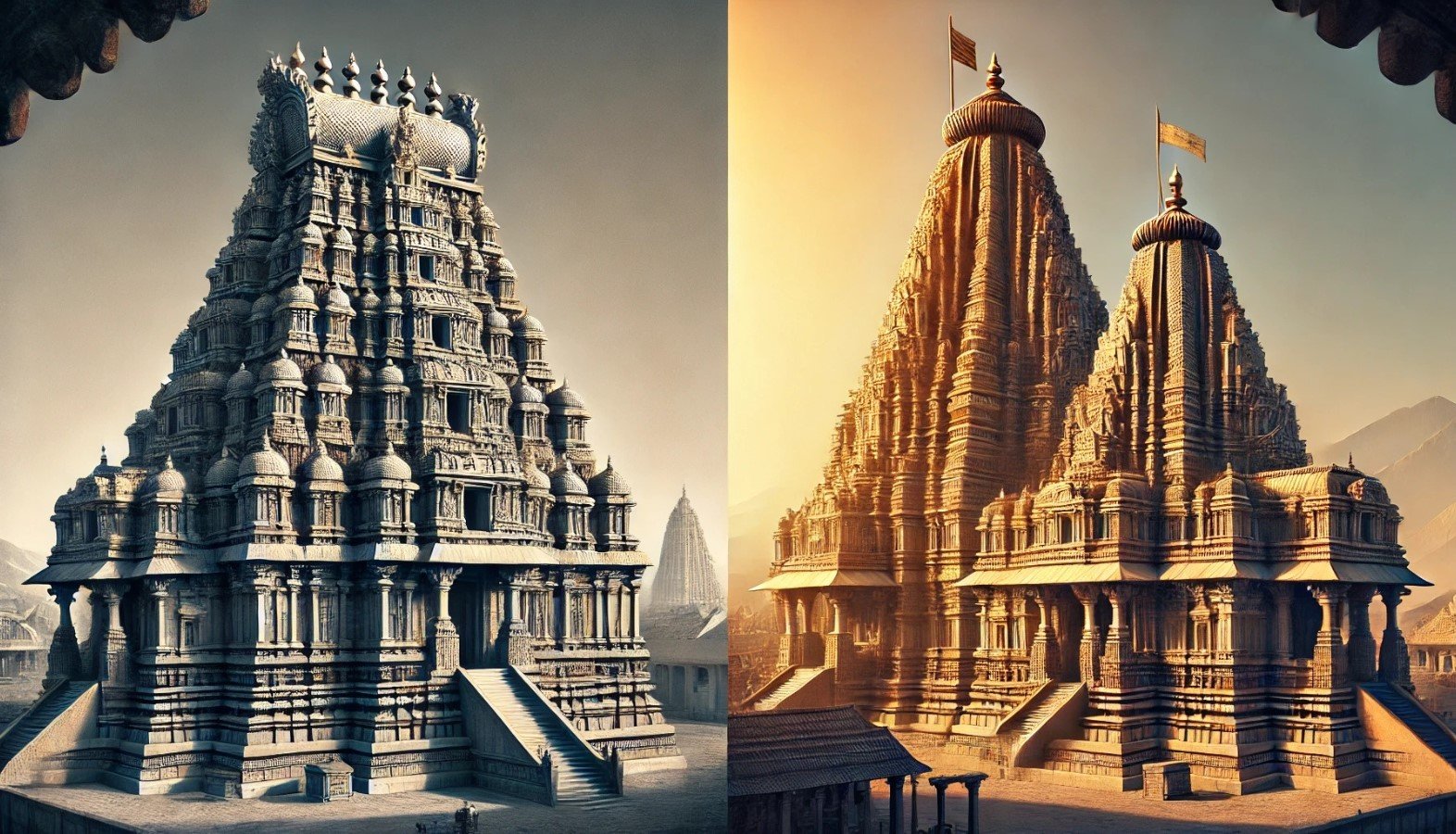Keywords: Orientation, Temple Architecture, Ancient India, Archeoastronomy, Vastu-sastra
Introduction
India’s architectural heritage is a tapestry woven with millennia of cultural evolution, and its temples stand as magnificent monuments to this legacy. This article delves into the fascinating orientation of Indian temples, exploring how geographical and cultural factors have influenced their design. Utilizing archeoastronomical insights and the principles of Vastu-sastra, we uncover the celestial alignments and ritualistic significances that are deeply embedded in the orientation of these sacred structures.
Historical Insights
The orientation of temples in India is crucial not just for their architectural design but also for their spiritual and ritualistic purposes. Examining over a hundred temples across India, this study highlights how regional deities and dynasties have influenced their directional alignments. From cardinal orientations to specific solar alignments, each temple’s orientation tells a story of cultural, religious, and astronomical significance.
Ancient Indian texts such as the Sulbasutras, Silpa or Vastu-sastras, and Agamas offer profound insights into the methods used for temple orientation. These texts describe techniques ranging from observing fixed stars to using gnomon shadows, showcasing a sophisticated understanding of astronomy among ancient Indian architects. These methods ensured that temples were not merely places of worship but cosmic instruments aligned with universal principles.
Vastu-Sastra and Temple Orientation
In Vastu-sastra, temple orientation is meticulously planned based on auspicious directions—typically North, East, and West—for deity installations and ritual practices. Temples dedicated to different deities exhibit varying orientations; for instance, Shiva temples often face East, symbolizing auspicious beginnings, while Vishnu temples may face both East and West to harness diverse cosmic energies.
Before the advent of modern navigational tools, ancient Indians relied on solar observations for directional guidance. The East, associated with the rising sun and new beginnings, held profound spiritual significance. Principles from Vastu-sastra, guided by the Vastu-purusha mandala, strategically positioned the central energy (Brahmasthan) to align with solar and lunar cycles, fostering cosmic harmony within temple precincts.
North-South Variations in Temple Orientation
South Indian temples predominantly venerate Brahma, Vishnu, and Shiva, while those in Eastern India, such as Odisha and West Bengal, often revere goddesses like Kali and Durga. This geographical variance influences temple orientations, reflecting regional religious practices and cultural nuances deeply embedded in architectural traditions.
The intricacies of temple orientation extend beyond mere directional alignment. Each cardinal direction carries symbolic significance rooted in Vedic cosmology and mythology. For example, the East-facing entrance symbolizes the rising sun, representing the journey from darkness to light, and is considered ideal for auspicious beginnings and spiritual awakening. In contrast, temples facing West often reflect the concept of the setting sun, symbolizing closure or culmination, aligning with rituals associated with the end of the day or life cycles.
Fig 4: Detailed floor plan of the Kashi Vishwanath Temple in North India, showing the layout with directional orientations marked.
Fig 5: Detailed floor plan of the Brihadeeswarar Temple in South India, showing the layout with directional orientations marked
Fig 6: Detailed floor plan of the Somnath Temple in Gujarat, India, showing the layout with directional orientations marked
Fig 7: Detailed floor plan of the Meenakshi Temple in Madurai, India, showing the layout with directional orientations marked
Regional Architectural Diversity
The diversity of India’s temple architecture mirrors its cultural and religious plurality. North Indian temples, influenced by Central Asian and Persian traditions, exhibit distinctive architectural styles and orientation practices compared to their Southern counterparts. The iconic Dravidian architecture of South India, characterized by towering gopurams and intricate carvings, emphasizes verticality and symmetry, often aligning with celestial movements relevant to local worship practices.
Conversely, North Indian temples, with their prominent shikharas and intricate spires, reflect influences from Indo-Islamic and Mughal architectural motifs, integrating Persian garden paradigms and courtyard layouts into temple complexes. These architectural nuances are not merely aesthetic but are deeply intertwined with the religious and cultural identities of their respective regions.
Fig 8: A realistic wide-angle shot of the Kashi Vishwanath Temple in North India. Capture the grandeur and architectural details of the temple
Fig 9: A realistic wide-angle shot of the Brihadeeswarar Temple in South India. Capture the grandeur and architectural details of the temple
Conclusion
Temple orientation in India epitomizes a harmonious blend of archeoastronomical insights, spiritual symbolism, and cultural diversity. The East-facing entrances, symbolizing the ingress of positive energy with the rising sun, remain integral to temple architecture across the subcontinent. As custodians of this ancient heritage, it is incumbent upon us to preserve and comprehend these architectural marvels, which serve not only as sanctuaries of devotion but also as living testaments to India’s rich cultural tapestry.
Fig 10: the infographic illustrating the blend of archeoastronomical insights, spiritual symbolism, and cultural diversity in Indian temples, highlighting key aspects such as East-facing entrances, solar observations, the Vastu-purusha mandala layout, and regional variations in architecture.
Bibliography
- D. Reidel Publishing Company, “Knowledge of Astronomy in Sanskrit Texts of Architecture (Orientation Methods in the ‘Īśānaśivagurudevapaddhati’),” Indo-Iranian Journal, 29 (1986), 17-29.
- Puneet Chawla, “Direction – Its Importance in Vastu,” April 4, 2019, Times of India.
- Dr. Smita, “Vastu Directions,” An Encyclopedia on Vastu Sastra.
- K. J. Oijevaar, “The South Indian Hindu Temple Building Design System,” September 2007, Delft University of Technology, The Netherlands.
- Robert Hannah, “Greek Temple Orientation: The Case of the Older Parthenon in Athens,” Faculty of Arts & Social Sciences, The University of Waikato.
- Harvard ADS
